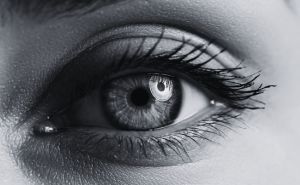The CURRENT Face Lift & Neck Lift
A facelift is a procedure to address aging changes of the lower face and neck. Jowl formation, a descent of facial tissues, neck skin laxity, and neck banding are all hallmarks of aging and can be addressed with a facelift and neck lift depending on your personal needs.

What is a Current Face & Neck Lift
The CURRENT lift is a highly specialized type of facelift that is a permanent solution for aging of the face and neck. A variety of factors causes facial aging – and extra skin is only a small part of this.
The face has ligaments that hold structures in place and aging causes drooping of skin and soft tissue around these ligaments, leading to deep wrinkles such as “smile lines”. Dr. Novis believes that natural face-lifting must involve tightening and repositioning these ligaments to create a smoother, more youthful appearance.
Dr. Novis performs a version of the extended deep plane facelift to give maximal and natural results.
Am I a candidate for a Face Lift?

The best candidates for face and necklift surgery are those that observe surplus neck skin, diminished definition of the jawline, the emergence of jowls or sagging skin around the mouth, and accentuated “smile lines”.
There is no definitive age determining candidacy for a face and necklift. Dr. Novis advises, “It’s appropriate to address an issue when it begins to affect you”.
Our practice has attended to face and necklift clients spanning from 40 years old to late 80s.
Each face and necklift is customized to each client to ensure unique concerns are addressed.
Procedure
Clients are expected to arrive on-time for their scheduled procedure. On the morning of the appointment, it is advised to abstain from consuming caffeinated beverages and ensure that breakfast is eaten. Having food in the stomach enhances comfort and helps prevent nausea. Prior to arrival, please cleanse the face thoroughly, ensuring no makeup or skincare products remain on the skin. Choose a top that is easy to remove, as it will need to fit over the head-dressing applied post-surgery. Avoid wearing any jewelry, including earrings, necklaces, bracelets, watches, etc., on the day of the procedure. Additionally, refrain from wearing contact lenses on the day of surgery.
Two weeks before surgery, it is advised to avoid drinking and/or smoking nicotine. One week before surgery, stop all aspirin and all aspirin-like products (ibuprofen, Advil, Motrin, Aleve, etc.). If you would like to use arnica supplements to reduce bruising, these may be started one week before surgery and continued for one week after.
On the day of your procedure, please come with someone who can drive you to and from your appointment. If your driver wishes to leave a cellular telephone number, we can text him or her with updates and a pick-up time.
Face and Necklift Surgery shopping list:
⦁ Bacitracin antibiotic ointment (over the counter)
⦁ Ice-packs or frozen peas
⦁ Vaseline or Aquaphor
Once there, you will be positioned comfortably on your back, with pillows behind your knees and under your neck. Please let us know if you cannot sit comfortably for 4-6 hours at a time. As the sedation takes effect, you will drift off to sleep, be numbed with local anesthesia, and sterile towels will be placed around your face and neck.
Through discreet incisions, located under the chin and in front of and behind both ears, Dr. Novis will lift and release the underlying muscle layers, and then secure them in place. Any tight ligaments causing wrinkles on the face will be released before securing the muscle. Once the muscle lift has been accomplished, excess skin is tailored, and the incisions are meticulously closed.
You will be given a prescription for pain medication (hydrocodone-acetaminophen 5/325 or oxycodone acetaminophen 5/325mg). It is important to understand and follow the instructions we provide upon your arrival to ensure discomfort is kept to a minimum during the critical healing period.
Your Recovery
Vivamus integer non suscipit taciti mus etiam at primis tempor sagittis euismod libero facilisi aptent elementum felis blandit cursus gravida sociis erat ante eleifend lectus nullam dapibus netus feugiat curae curabitur. Massa curae fringilla porttitor.
Results




FACE LIFT & NECK LIFT FAQ
What is a CURRENT lift (facelift – rhytidectomy)?
The CURRENT lift is a highly specialized type of facelift that is a permanent solution for aging of the face and neck. A variety of factors causes facial aging – and extra skin is only a small part of this. The face has ligaments that hold structures in place and aging causes drooping of skin and soft tissue around these ligaments, leading to deep wrinkles such as “smile lines”. Dr. Novis believes that natural face-lifting must involve tightening and repositioning these ligaments to create a smoother, more youthful appearance. Dr. Novis performs a version of the extended deep plane facelift to give maximal and natural results.
Am I a candidate for a facelift or neck lift?
The best candidates for face and neck lift surgery are those that observe surplus neck skin, diminished definition of the jawline, the emergence of jowls or sagging skin around the mouth, and accentuated “smile lines”. There is no definitive age determining candidacy for a face and neck lift. Dr. Novis advises, “It’s appropriate to address an issue when it begins to affect you”. Our practice has attended to face and neck lift clients spanning from 40 years old to late 80s. Each face and neck lift is customized for each client to ensure unique concerns are addressed.
What is the difference between a Facelift, and a Neck lift?
There is often confusion regarding the terms facelift and neck lift and they will vary from surgeon to surgeon, as they all deal with the same area. For Dr. Novis, a facelift addresses facial wrinkles, volume descent, and jowls. A facelift will give some neck tightening, but in individuals with more neck skin or more laxity, a neck lift is needed in addition. A neck lift involves an additional incision underneath the chin and an extension of the incisions behind the ears to fully address laxity and neck skin excess. The CURRENT lift is tailored to your specific needs and can include a facelift, neck lift, or a combination of the two.
Do I need to have general anesthesia for a facelift or neck lift?
No, the CURRENT lift is performed without general anesthesia. Patients will take oral sedative medications prior to the procedure, and carefully administered local anesthetic allows for a comfortable experience. Avoiding general anesthesia significantly speeds recovery and avoids the major risks associated with general and intravenous anesthesia for cosmetic procedures.
No, the CURRENT lift is performed without general anesthesia. Patients will take oral sedative medications prior to the procedure, and carefully administered local anesthetic allows for a comfortable experience. Avoiding general anesthesia significantly speeds recovery and avoids the major risks associated with general and intravenous anesthesia for cosmetic procedures.
Will a facelift give me an unnatural or “pulled” look?
No, Dr. Novis is an expert in natural facelifts and neck lifts. A “pulled” look comes from placing tension on the skin without addressing the underlying issues. Dr. Novis utilizes a deep plane technique and repositioning of volume to give natural results. Excess skin is removed, but there is never tension on the skin flaps, which optimizes healing. Dr. Novis’ patients often report people complimenting them on “looking more refreshed” or “looking like I lost weight” but not like they have had work done.
What will my facelift scars look like?
Dr. Novis meticulously plans incisions to create virtually undetectable scars. Incisions in front and behind the ear are placed in the hairline where hair will grow around them. Dr. Novis never shaves hair and preserves the natural hair follicles to allow hair to grow through the incision sites. Dr. Novis carefully places incisions in natural creases and inside the ear cartilage to create a natural appearance.
Will my facelift address my jowls?
Yes, our facelift and neck lift will address jowls. Jowls are the areas of skin and fat at the corners of the mouth that hang below the jawline. Jowls are caused by a combination of skin excess, soft tissue descent, and sometimes underlying fat pad herniation. Dr. Novis often performs a facelift for jowls or to address this common complaint.
Is a facelift surgery painful?
Through expertise and experience, Dr. Novis has adapted facelift and neck lift surgery so it is well tolerated. She uses a personally-developed blend of injectable anesthetic agents to provide comfort as well as reduce bruising or swelling. All patients are given medications pre and post operatively to minimize discomfort and speed healing. Patients often report more “soreness” or “tightness” and rarely require pain medication for more than 1-2 days.
Can I wear a ponytail after Facelift surgery?
Yes, a ponytail can be worn after a facelift or neck lift surgery with Dr. Novis. She uses meticulous incision planning and closure to optimize healing and camouflage scars within the hairline.
How long is the recovery after a facelift or neck lift?
Preoperatively, you will meet with Dr. Novis to discuss the procedure in depth and answer all instructions. You will be given all medications before the surgery as well as day-by-day instructions on how to care for your surgical sites and what to expect. A detailed healing timeline is located on the “Recovery” tab on this site.
